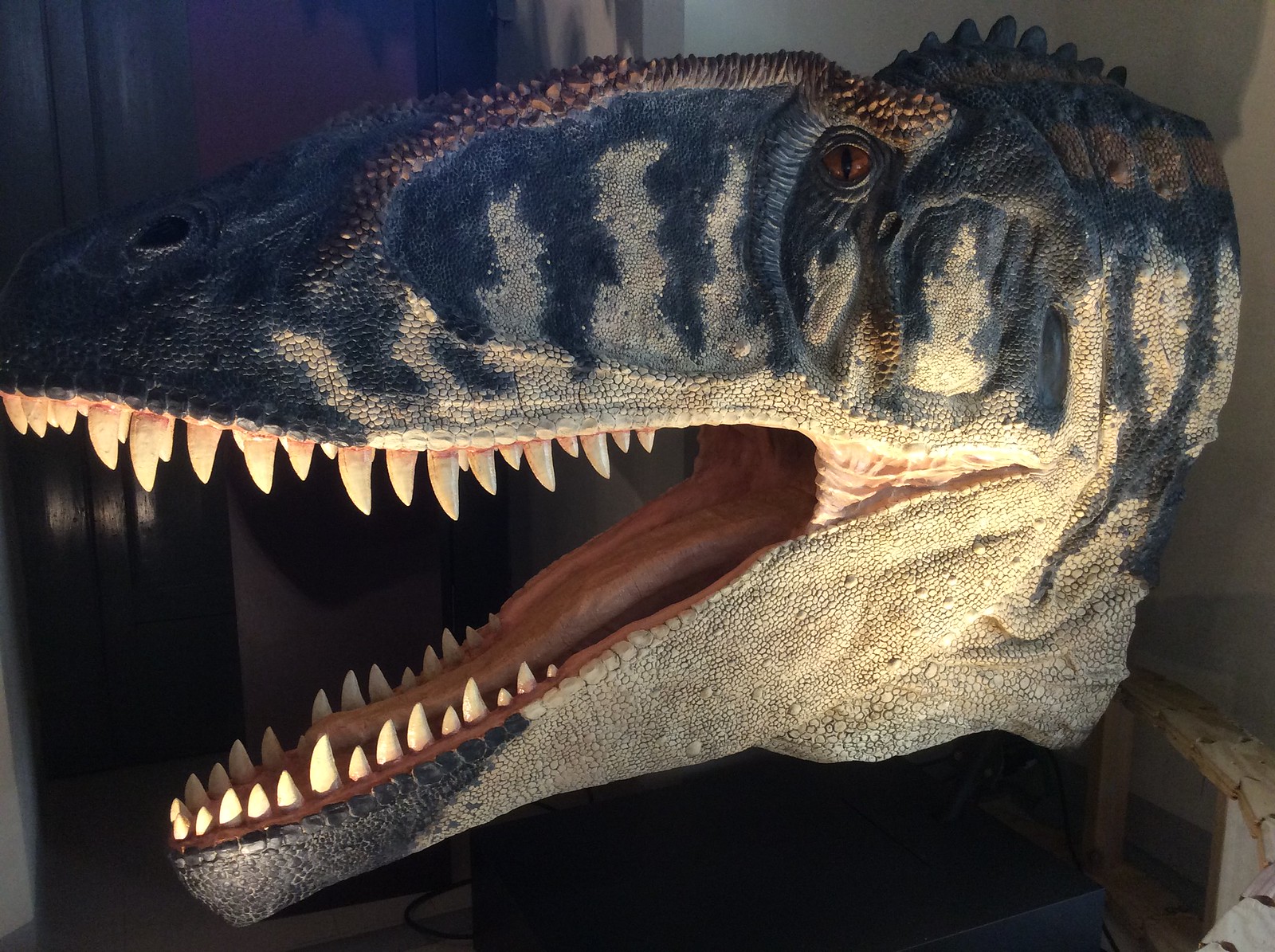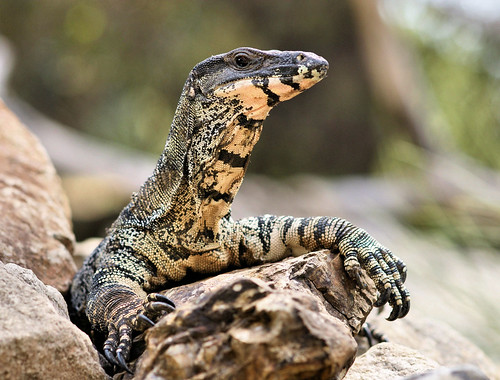Post by Deleted on Feb 21, 2014 17:13:29 GMT 5
Komodo Dragon - Varanus komodoensis
The Komodo dragon (Varanus komodoensis), also known as the Komodo monitor, is a large species of lizard found in the Indonesian islands of Komodo, Rinca, Flores, Gili Motang and Gili Dasami. A member of the monitor lizard family (Varanidae), it is the largest living species of lizard, growing to a maximum length of 3 metres (9.8 ft) in rare cases and weighing up to around 70 kilograms (150 lb). Their unusual size has been attributed to island gigantism, since there are no other carnivorous animals to fill the niche on the islands where they live. As a result of their size, these lizards dominate the ecosystems in which they live. Komodo dragons hunt and ambush prey including invertebrates, birds, and mammals. Their group behaviour in hunting is exceptional in the reptile world. The diet of big Komodo dragons mainly consists of deer, though they also eat considerable amounts of carrion. In the wild, an adult Komodo dragon usually weighs around 70 kilograms (150 lb), although captive specimens often weigh more. The largest verified wild specimen was 3.13 metres (10 ft 3 in) long and weighed 166 kilograms (370 lb), including undigested food. The Komodo dragon has a tail as long as its body, as well as about 60 frequently replaced serrated teeth that can measure up to 2.5 centimetres (1 in) in length.

Sun Bear - Ursus malayanus
The sun bear (Ursus malayanus), sometimes known as the honey bear, is a bear found primarily in the tropical rainforests of Southeast Asia; North-East India, Bangladesh, Myanmar, Thailand, Laos, Cambodia, Vietnam, Southern China, Peninsular Malaysia, and the islands of Sumatra and Borneo. The sun bear is 120–150 cm (47–60 in) long, making it the smallest member in the bear family (Ursidae). Males tend to be 10–45% larger than females; the former normally weigh between 30 and 70 kg (66–154 lb), and the latter between 20 and 40 kg (44–88 lb). The shoulder height is about 60–72 cm (24–28 in). The sun bear possesses sickle-shaped claws that are relatively light in weight. It has large paws with naked soles, probably to assist in climbing. Its inward-turned feet make the bear's walk pigeon toed, but it is an excellent climber. The diet of the sun bear consists mainly of invertebrates and fruits but as omnivores they will eat a wide variety of foods including small vertebrates, such as lizards, birds, and turtles, eggs, the young tips of palm trees, nests of bees, berries, sprouts, roots, and coconuts. In fact, sun bears have been observed to eat over 100 insect species and over 50 plant species.

The Komodo dragon (Varanus komodoensis), also known as the Komodo monitor, is a large species of lizard found in the Indonesian islands of Komodo, Rinca, Flores, Gili Motang and Gili Dasami. A member of the monitor lizard family (Varanidae), it is the largest living species of lizard, growing to a maximum length of 3 metres (9.8 ft) in rare cases and weighing up to around 70 kilograms (150 lb). Their unusual size has been attributed to island gigantism, since there are no other carnivorous animals to fill the niche on the islands where they live. As a result of their size, these lizards dominate the ecosystems in which they live. Komodo dragons hunt and ambush prey including invertebrates, birds, and mammals. Their group behaviour in hunting is exceptional in the reptile world. The diet of big Komodo dragons mainly consists of deer, though they also eat considerable amounts of carrion. In the wild, an adult Komodo dragon usually weighs around 70 kilograms (150 lb), although captive specimens often weigh more. The largest verified wild specimen was 3.13 metres (10 ft 3 in) long and weighed 166 kilograms (370 lb), including undigested food. The Komodo dragon has a tail as long as its body, as well as about 60 frequently replaced serrated teeth that can measure up to 2.5 centimetres (1 in) in length.

Sun Bear - Ursus malayanus
The sun bear (Ursus malayanus), sometimes known as the honey bear, is a bear found primarily in the tropical rainforests of Southeast Asia; North-East India, Bangladesh, Myanmar, Thailand, Laos, Cambodia, Vietnam, Southern China, Peninsular Malaysia, and the islands of Sumatra and Borneo. The sun bear is 120–150 cm (47–60 in) long, making it the smallest member in the bear family (Ursidae). Males tend to be 10–45% larger than females; the former normally weigh between 30 and 70 kg (66–154 lb), and the latter between 20 and 40 kg (44–88 lb). The shoulder height is about 60–72 cm (24–28 in). The sun bear possesses sickle-shaped claws that are relatively light in weight. It has large paws with naked soles, probably to assist in climbing. Its inward-turned feet make the bear's walk pigeon toed, but it is an excellent climber. The diet of the sun bear consists mainly of invertebrates and fruits but as omnivores they will eat a wide variety of foods including small vertebrates, such as lizards, birds, and turtles, eggs, the young tips of palm trees, nests of bees, berries, sprouts, roots, and coconuts. In fact, sun bears have been observed to eat over 100 insect species and over 50 plant species.















